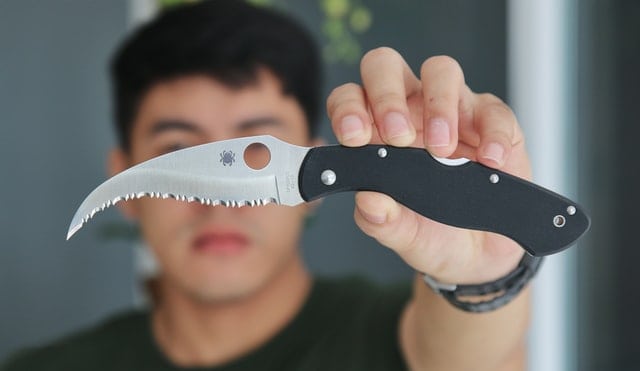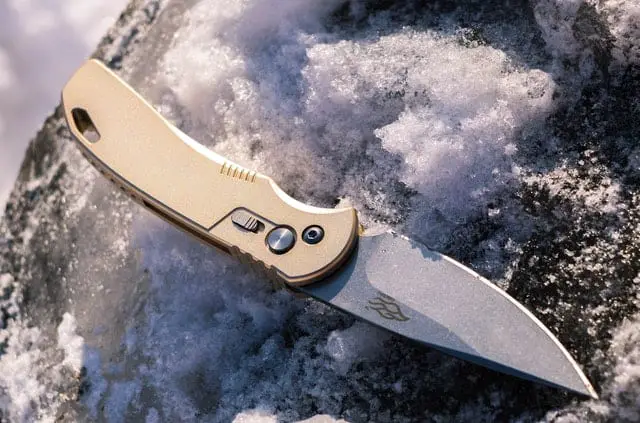When it comes to woodworking, having the right tools is crucial. But with so many types of knives available, it can be not easy to know which one to choose. In this blog post, we’ll explore the key differences between pocket and whittling knives so that you can make an informed decision. From blade length to handle materials, we’ll cover everything you need to know to start carving. Let’s dive in!
One of the most common types of knife is the carving pocket knife, with a blade length between three and six inches. Pocket knives are made with carbon steel, which is quite durable but can rust if left in a wet environment. The handle will also be made of wood, either plastic, metal, or both. The sheath, which is the body of the knife, will also be made of wood, with leather or an imitation leather covering. Although the length of the blade will vary with the knife, it will be between 2.5 and 6 inches. Let’s get into a more detailed comparison.
Key features of a pocket knife
Blade Type
Your project determines the blade shape you prefer to carry. Bear in mind that some blade types are more versatile than others.

Thumb Stud
A thumb stud that allows you to open your knife using one hand helps. That is why a thumb stud is on a pocket knife. That way, the ergonomics of the knife allow you to grip and deploy the blade while using your other hand free.
Grip
There are different types of material used for the grip. The knife should have a good feel on your palm. Look for a grippy pocket knife to the extent that even when your hands are sweaty or oily, you can still have a safe grip.
Lookout for grooves cut into the area where your thumb lay on the knife grip. These are known as jimping and reduce slippage of your hand. The grip is key in your decision.
Steel
These durable knives use reliable and sharp D2 steel. Stainless steel has good edge retention and sharpness. These features increase performance and effectiveness. When looking for your knife, look for one that will hold its edge up to tough tasks.
These are a bit harder to sharpen, but the longevity of the edge will be much better than softer steels. Softer steels give a sharpening experience but with the trade-off of lesser edge retention.
Key features of a whittling knife
Grip
The handle of a whittling knife should feel comfortable in your hand. That prolongs sessions so that they last long. A comfortable handle relieves the stress on your hands. It should be made from durable wood material and give you total control of the blade.
Weight
When looking at a whittling knife, consider its weight. It should be lightweight. That makes carrying it bearable if you plan to carry your blade. The lighter, the better. Maneuvering becomes easier, meaning all the push and pull cuts will be easier and more precise. A lighter whittling knife relieves stress on your hands and arm muscles.
Carbon Steel Blade
Pocket Knife blades are stainless steel. It holds an edge for a long and does not corrode if you close the knife with a wet blade. These are great qualities for pocket knives. Stainless steel dulls slowly and sharpens slowly as well.

Most carving tools are high-carbon steel, and using stainless steel blades can be tricky. However, knives with high-carbon steel blades are less affordable than knives with stainless steel blades. They are easier to sharpen.
High-carbon stainless steel blades have been lately popular in the industry. They combine the durability of stainless steel and added benefits of carbon steel.
Blade Location
Some pocket knives have 10 to 20 blades, which are less comfortable for long periods. The blades you want to carve with are in the center of the handle. If the knife blade is not in the center of the handle, you lose leverage, which reduces your carving power and control.
Look for a knife with two or three blades. That ensures the blades are in a convenient location. A sheepsfoot blade (top) is better suited for whittling than a drop-point blade (bottom).
Similarities
- They are made of steel.
- They are small.
- Both are for whittling.
- They come with different types of blades.
Differences between whittling knives and pocket knives
- Pocket knives are stainless steel, whereas whittling knives are high-carbon steel.
- Pocket knives dull and sharpen slowly, whereas whittling knives are the opposite.
- Pocket knives are more affordable than whittling knives.
- A pocket knife is easier to carry than a whittling knife.
What is the best knife for whittling?
Flexcut Tri-Jack Pro
Flexcut Tri-Jack Pro is a specific carving knife with three different blades. It is for roughing, detailing, and cutting. It fits easily and securely in your pocket or backpack. The blades lock in the open position. It has black aluminum handles with cherry wood inlay.
Flexcut carving tools address the needs of the modern hobbyist and professional. Designed by woodcarvers for woodcarvers. Flexcut features flexible blade shafts with razor-sharp cutting edges for great control over each cut.
Each blade is precision-machined from high carbon content steel for a hard cutting edge that stays sharp. Each knife blade is hand-sharpened at the factory and tested before shipping. The tools have ergonomically designed handles that enable long periods of carving without hand fatigue (Source).
What makes a good whittling knife?
A good whittling knife should have a thin, well-sharpened blade for precise cuts and intricate details. It should also be made from high-quality materials that can withstand frequent use. Additionally, many experienced whittlers prefer knives with two springs, one for each of the secondaries, with the main blade riding on both. This design provides greater control and stability during carving.
How do you use a whittling knife?
Hold the wood in your left hand and the knife in your other hand. The blade had to face away from you. Place both your right and left thumbs on the back of the knife blade. Push the blade forward with your left thumb while your right thumb and fingers guide the knife blade through the wood.
Are Buck Knives good for whittling?
Yes, they are and produce high-quality, affordable knives. These knives are built to last and look great for a long time. If you like traditional knives, you can also like the buck knife. Buck has the right mix of folding and fixed-blade knives for any occasion.
Blade Shape
Look for a sheepsfoot blade where the tip of the knife is aligned with the cutting edge, like a utility knife or standard bench knife. Pocket knife blades have a drop-point shape, which centers the tip of the knife in the middle of the blade.
The drop-point shape is ideal for cutting purposes but makes it difficult to carve small details. You can reshape a blade using sharpening stones and sandpaper, but the process takes time.
Locking Blades
A locking blade keeps the sharp knife from closing on your fingers, a good safety feature. Be aware that a knife can close your fingers. Stay safeŕ, regardless of whether your knife has a locking feature.
- Grain and Sheen: Teak Oil versus Danish Oil Uncovered - January 10, 2024
- The Cherry on Top: Crafting the Perfect Cutting Board - January 9, 2024
- Polyurethane Water-Based vs Oil-Based: Choosing the Right Finish - January 8, 2024